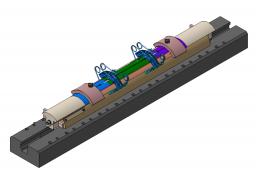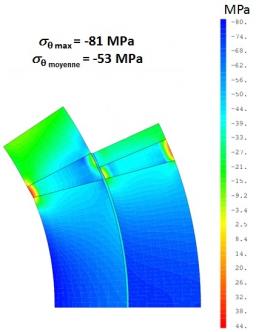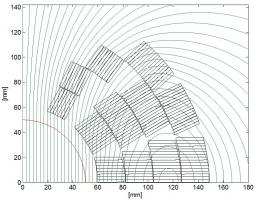The SAFIRS project (Superconducting magnet Activities for Future Interaction Region of SLHC) brings together IRFU activities on future superconducting magnets required for upgrading the LHC to achieve greater luminosity and energy levels. The LHC luminosity upgrade, known as SLHC, was originally planned to be completed in two stages. SLHC - Phase I, to be completed by 2014, aimed to increase the luminosity by a factor of 2 to 3, and SLHC - Phase II, to be completed by 2018, aimed to increase the luminosity by a factor of 10. Following the incident that occurred on the LHC in September 2008, its repair and the changes made to the operating program of the LHC, increasing the operating periods beyond those originally planned, CERN decided to cancel Phase I of the SLHC and to move immediately to Phase II. However, the studies on NbTi quadrupole triplets for Phase I have continued with the aim of providing a tested fall-back solution.
NbTi quadrupole triplets
The luminosity of the LHC could be increased by a factor of 2 to 3 by replacing the final focusing quadrupole triplets with longer quadrupole triplets with a wider aperture of 120 mm compared with the 70 mm aperture of the current triplets. The peak field foreseen on the conductors is of the same order of magnitude as that in the LHC main quadrupoles, enabling the use of NbTi. However, the stored energy and the electromagnetic forces involved are very much higher. Design studies for the quadrupoles have been carried out in collaboration between the CEA and CERN, under FP7 and the French Special Contribution to CERN. The magnetic design work was carried out by CERN, while the CEA was responsible for the mechanical design. CEA is also in charge of the manufacturing of four 1.8 m coils (+ 1 test coil) which will be assembled and tested at CERN to validate the design.

Mock-up of the winding tooling for testing on the first block of the internal layer of the quadrupole (by courtesy of SIS).
The project began in September 2008 with studies on two different coil configurations, and the final choice of a four-block configuration was made in October 2009. Since then, the mechanical design has been completed and detailed studies on the winding and polymerization tooling have begun. First 1.8-m coil manufacturing is planned for October 2010.
High field Nb3Sn dipole
The magnetic fields required for Phase II of the SLHC, and the radiation doses received by the magnets in the interaction regions, make it impossible to use NbTi for these magnets and require the use of Nb3Sn.
The two coil configurations studied for the Nb3Sn dipole: Cos θ configuration and block configuration (by courtesy of A. Milanese, CERN).
A number of R&D activities have been launched in order to study the ability of the components foreseen for the coils to withstand radiation, model and optimize the extraction of heat from the coils, and master the use of Nb3Sn in accelerator magnets. The final objective of these activities is the manufacturing of a Nb3Sn dipole with a 100 mm aperture and a central field of 13 T at 4.2 K. This work is being carried out in collaboration with CERN and the Technical University of Wroclaw, with funding from FP7 EuCARD and the French Special Contribution to CERN.In addition to the participation in the design and manufacturing of Nb3Sn dipole coils, work is also being carried out on heat exchange measurements on the different materials foreseen for the dipole, the manufacturing of three Nb3Sn coils in a racetrack configuration with ceramic insulation, and the supply of the high performance Nb3Sn strand needed for the dipole. The design studies for the dipole began in September 2009, and the final choice of coil configuration is intended to be made during 2010.
• superconducting magnet physics and technology › Instrumentation and development for R&D magnets





